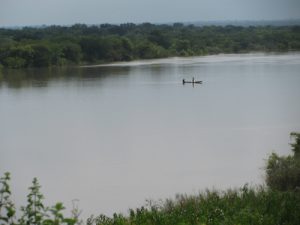Special topics

According to history, onshore exploration activities continued during the First Republic (1957-1966). Acting under the auspices of a Ghana-Soviet Union friendship pact, Soviet and Romanian Geoscientists explored for oil and gas in the Accra or Keta and Voltaian basins.
During this period, the Soviet team drilling for water in the onshore Voltaian basin encountered traces of oil and gas in some of the boreholes in some areas in the Northern and Upper East Regions.
Today, the Voltaian Basin is an asymmetrical inland basin covering about 40% of Ghana’s continental landmass. It stretches into Togo, Benin and Burkina Faso.
However, following the experiments of some countries, there has been advised for better understanding of exploration in such basin Worldwide. This is because it has been scientifically proven that exploration of this Neoproterozoic basin carries higher risk than most conventional petroleum plays because of its age and probable geological history.
A seismic research study done by the Ghana National Petroleum Corporation, the Voltaian basin disclosed that the basin possess about 48 wells. However, the study indicates that the tripartite stratigraphic division for Voltaian Super group which comprises Bambouaka-Afram, Oti Penjari, and Obosum. The basin formed during the Pan African Orogeny about six hundred million years ago (600 Ma) as a result of the collision between the stable West African Craton and the Pan African Mobile Belt, which are represented in Ghana by the Birimian Super Group and the Dahomeyan System respectively
The basin is divided into three, known as the Upper Voltaian, which comprises massive and thinly bedded sandstones with some shales. The Middle Voltaian, also comprises sandstones with limestone intercalations (Upper Greenish-Grey Series), shales with limestone intercalations, siltstones, silty sandstones (Variegated Series) and conglomerates whilst the Lower Voltaian, which comprises sandstones, shales and siltstones (Lower Greenish-Grey Series) and quartz sandstone (Basal Sandstone Series).
The Keta Basin is part of the larger Voltaian Basin, which includes onshore areas stretching up to the northern parts of the country. According to some analysts, the Keta Delta block is estimated to cover an area of 3,000 square kilometers. In 2016, former president John Mahama announced that an agreement for the start of onshore oil and gas exploration in the Keta Basin of the Volta Region has been finalized.
An exploration and production license was awarded to Swiss African Oil Company, a subsidiary of Swiss African Petroleum AG for the new block. The deal which was a joint venture between Government, Ghana National Petroleum Corporation, Swiss African Oil Company Limited and PET Volta Investments makes it the first onshore oil exploration deal in the country. This came as a blessing for the country following the delay by past government to give the green light for the first onshore oil exploration deal.
There is no doubt that the Voltaian basin has great potential to hold significant petroleum resources to increase the country’s oil revenue profits.
www.reportingoilandgas.org- Jacqueline Parditey